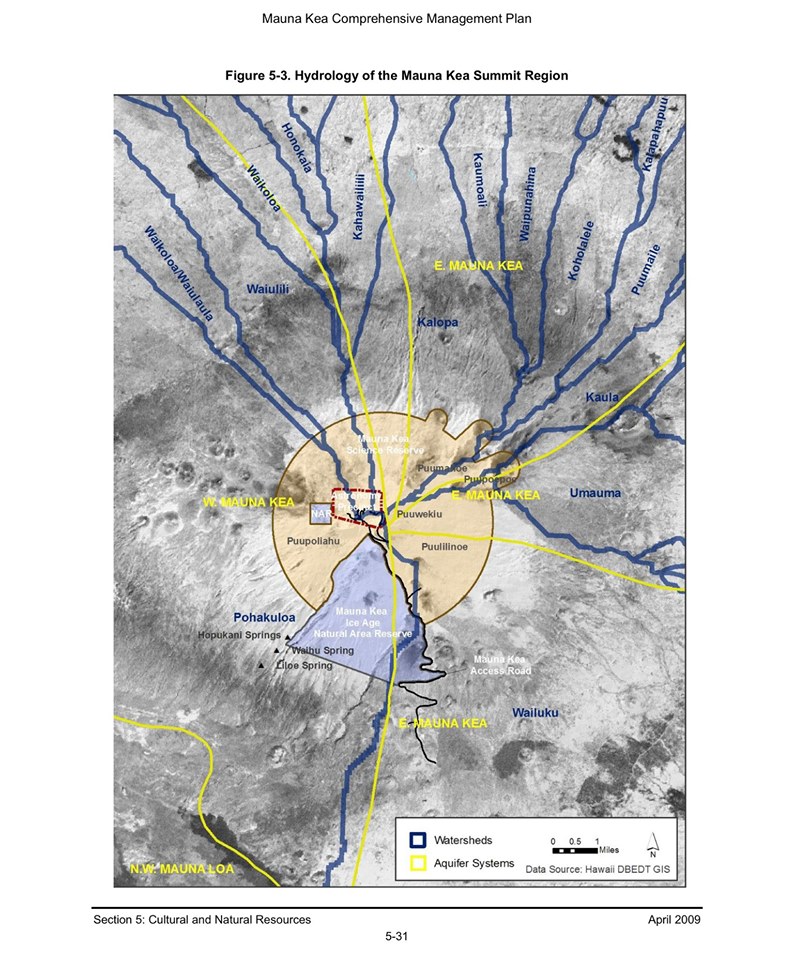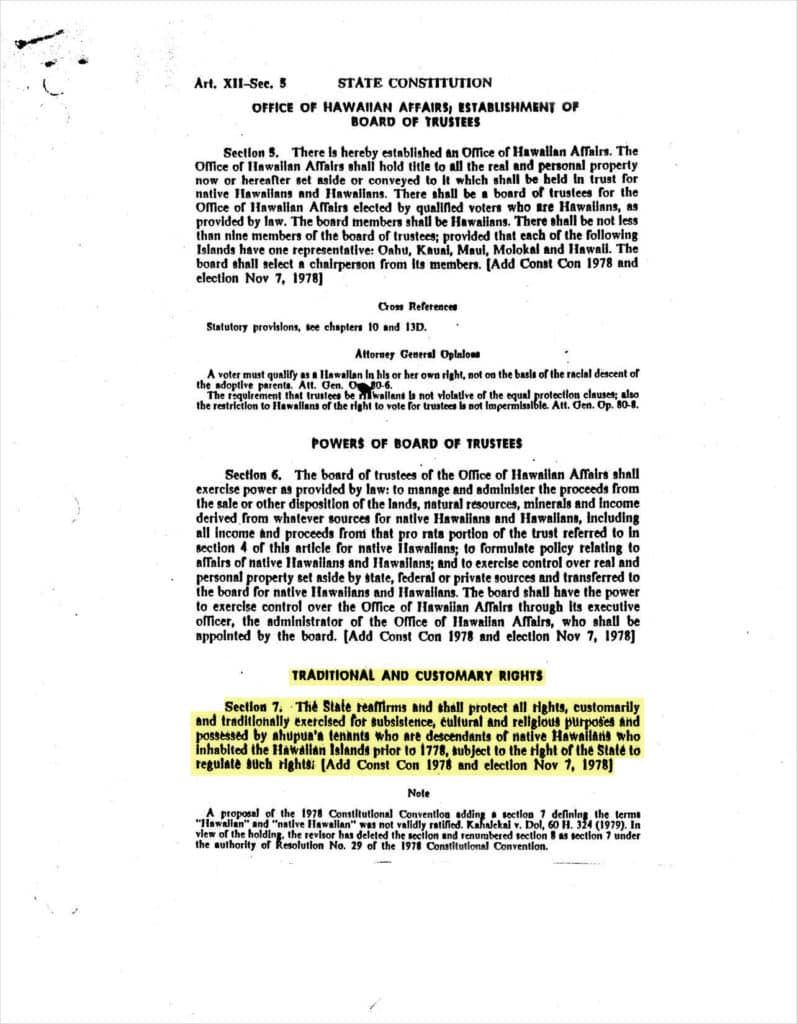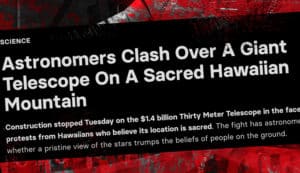10 questions about Mauna Kea whose answers might surprise you
Here are 10 questions and answers that could impact your opinion about whether the TMT project is right for Hawaiʻi.
*This article was originally posted on July 12, 2019 before the arrests on the mauna took place. Since then, conversations have shifted.
1
Is the State of Hawaiʻi giving a repeat offender an opportunity to execute bigger violations on Mauna Kea?
Yes. In 1998, 2005, 2014, and 2017 the University of Hawaiʻi (UH) faced critical audits for their mismanagement of Mauna Kea. These violations were so bad that the Office of Hawaiian Affairs successfully defended a motion for dismissal in its lawsuit against UH, the Department of Land and Natural Resources (DLNR), and the State of Hawaiʻi for their collective mismanagement of Mauna Kea. The lawsuit is ongoing. No accountability or oversight measures are in place to ensure that UH will fix its failings. Yet the DLNR and State are placing in UH’s hands the management of TMT, a project bigger than the collective 13 existing telescopes that UH has already demonstrated they cannot manage properly.
2
Is the building permit the TMT project received out of the ordinary?
Consider this: Can you think of any other 18-story (or even 8-story) structure on Hawai’i Island, where building codes confine projects to a 7-story limit? Can you recall any 5-acre building being erected in a protected historic district that’s doubly safeguarded as a conservation district (e.g., the Nā Pali Coast on Kauaʻi, Kaʻena on Oʻahu, the northeastern side of Molokaʻi, and valleys such as Waimanu and Waipiʻo on Hawaiʻi Island)? Aside from the H3 Tetsuo Harano Freeway, which the US Congress in 1986 exempted from an environmental law that the courts had determined H3 plans would violate (Section 4(f) of the Department of Transportation Act of 1966), TMT’s permit is unique. Even NASA didn’t get the same special treatment that TMT enjoys. In 2005, NASA’s much smaller planned Outrigger Telescopes Project, was halted. NASA’s Final Environmental Impact Statement determined that “the impact of past, present, and reasonably foreseeable future activities on cultural and biological resources is substantial, adverse, and significant.” As such, the project was not forwarded. If NASA’s far smaller undertaking was cancelled, how is it that the substantially larger TMT project is being green lighted?
3
Do two “wrongs” make a “right”?
Perhaps more “wrongs” matter. It seems 13 “wrongs” make a “right” for the Board of Land and Natural Resources (BLNR) and the Hawai‘i State Supreme Court. The Supreme Court had to determine if the 5-acre, 18-story TMT plans would harm the cultural, historic, and environmental resources of the historic district and conservation zone of Mauna Kea. If it would, TMT’s conservation district use permit granted by the BLNR would have to be overturned. Instead of contending that the TMT would not cause harm, the Supreme Court adopted the BLNR’s argument that the 13 telescopes had created so much damage that one more project couldn’t make the problem worse, even though the TMT would be built on an untouched, pristine northern plateau of Mauna Kea. As dissenting Supreme Court Justice Michael Wilson affirmed, such twisted logic “violates norms of environmental law.” It also runs counter to ethics about truth telling and plain common sense. This questionable ruling is what State Attorney General (AG) Clare Conners insists (in a June 20, 2019 press conference) “must be respected.”
4
Do all Mauna Kea structures need to go through the same permitting process?
No. In 1968, UH built its UH 2.2-meter Telescope without a permit. That same year the Air Force Cambridge Research Laboratories built a facility without a permit. (It was later transferred to the UH Institute for Astronomy in 1970 and still later to the UH Hilo Department of Physics in 2003.) Following public protests about the unlawful and inappropriate use of Mauna Kea, the BLNR did not order UH to dismantle the unpermitted structures. Instead, in 1977 the BLNR issued after-the-fact permits for the telescopes—one of the more notable chapters in the larger story of 50 Years of Mismanaging Mauna Kea. In contrast, on June 19, 2019, government officials tore down two hale built on Mauna Kea well off of existing roadways and far from the planned TMT construction and staging areas. In a recent June 20, 2019 press conference held by state officials, a reporter asked, “Did the structures interfere? Would they interfere with any construction activities that will be happening?” DLNR Chair Suzanne Case said, “Uh, potentially. They were removed because they were unauthorized structures.” In other words, the structures lacked building permits. The reporter followed up by asking, “Will that make the construction easier for them to be gone?” AG Conners replied, “Yes, it is a safety and security reason. We do need to ensure that those structures are not erected, for safety and security reasons.” Conners didn’t explain whose safety and security were improved when the structures were destroyed.
5
Are government officials attempting to erase Native Hawaiians’ rights to engage in cultural practices reserved by law?
Based on government officials’ comments at their June 20, 2019 press conference, the only right they acknowledge that Native Hawaiians possess is the right to freedom of speech. AG Conners set up a binary choice for Hawaiians saying, “There is a difference…between lawful speech and unlawful conduct.” Governor Ige similarly proclaimed, “To those of you who want to exercise your constitutional right of free speech to express your opinion on this project, we welcome your voice and we remind you of your obligation to conduct yourself in compliance with laws and without endangering the lives of others.” However, freedom of speech is not the only right that Mauna Kea protectors can exercise on Mauna Kea. The State of Hawaiʻi Constitution, Article 12, Section 7, and Judge Robert Klein’s Public Access Shoreline Hawaiʻi ruling, ensure legal protections for Native Hawaiians to engage in traditional cultural, subsistence, and religious activities—which are at the heart of their efforts to protect Mauna Kea from a mega undertaking. Such practices are the core reasons the Mauna Kea protectors built two ahu in 2015, which government officials also recently demolished.
6
Are government officials preparing to treat as military targets people exercising their free speech rights or their rights to engage in traditional Hawaiian cultural and religious practices?
KAHEA confirmed that the DLNR contracted the LRAD Corporation to use its LRAD 100X MAG-HS system from June 15, 2019 through December 15, 2019. The LRAD Corporation boasts that their sound cannons “have proven highly effective for many military applications.” Its technology “focuses sound in a 15 degree – 30 degree beam” to deliver “scalable, non-lethal, non-kinetic deterrent tones” that can “disperse hostile crowds” and “establish large standoff zones” allowing its users to “safely initiate EOF [escalation of force] protocol.” “Created for the U.S. Military after the terrorist attack on the USS Cole in 2000, LRADs were designed as acoustic weapons meant to repel anyone exposed to them. By emitting sound at an almost-intolerable amplitude, they force people in the device’s path to flee,” according to NBC News. In a December 5, 2014 Black Lives Matter event, the New York City police used an LRAD sound cannon “to emit a series of sharp, piercing beeps directed at people who in some cases were less than 10 feet away. Soon afterward, six of those who were nearby at the time and said they had developed migraines, sinus pain, dizziness, facial pressure and ringing in their ears filed a lawsuit challenging the police’s use of the device,” reported the New York Times. Despite two failed NYPD attempts to have the lawsuit dismissed, the plaintiffs are proceeding with their case alleging excessive use of force.
7
Does the State of Hawaiʻi have clear title to Mauna Kea and legitimate rights to determine who can use it?
No. The Mauna Kea summit is ceded land—that is, part of the roughly 1.8 million acres seized from the Hawaiian Kingdom government and Queen Liliʻuokalani by a cabal of sugar businessmen and missionary descendants with US military backing—an undertaking that President Grover Cleveland called “an act of war.” The cabal gave the stolen property to the US, and the US in 1959 transferred 1.4 million acres of the property to the State of Hawaiʻi for purposes such as “the betterment of the conditions of native Hawaiians,” as stipulated in Section 5(f) of the Admission Act. As such, Hawaiians have more than a spiritual connection to the Mauna Kea summit. They have historical, political, and economic claims to these lands as well.
8
Are government officials putting the water supply of Hawaiʻi Island residents at risk?
Yes. If we take a look at Oʻahu’s struggle, the risks for Hawaiʻi are clear. Long ago the Navy assured Oʻahu residents that Navy fuel storage tanks were safe. They were dead wrong. The Sierra Club confirmed that “at least 200,000 gallons of fuel have leaked into the surrounding environment” of Kapūkaki (aka Red Hill). Hawaiʻi County and Department of Health officials certainly are aware of the leaky Navy tanks and Oʻahu’s troubled water supply. Yet they are turning a blind eye and placing Hawaiʻi water sources in similar danger. The existing telescopes on Mauna Kea involve multiple hazardous materials—fuel, hydraulic fluid, paints and related solvents, oil and lubricants, and mercury. Many Hawaiʻi Island residents rely on water that filters through Mauna Kea, beginning at the summit where the telescopes sit. TMT will include two 5,000 gallon tanks installed two stories below ground level, one for chemical waste, the other for human waste. How and when would anyone know that the tanks are leaking toxic liquid into the water sources families depend on? Why would the Department of Health gamble with the health and safety of Hawaiʻi Island’s water supply?

9
Is Mauna Kea the only place where the TMT can do its best work for astronomers?
No. La Palma in the Canary Islands is a prime alternative. The Canary Islands are a group of seven islands in the Atlantic that sit off the coast of Morocco but are politically part of Spain. An article entitled, “La Palma is another favorite destination for the world’s astronomers,” reports that “it is one of the best places in the world to observe the night sky. It sits more than 7,800 feet above sea level, putting it above the inversion layer where clouds usually form.” It also is endowed with “clear skies, perfect weather and near zero light pollution.” As reported in El Pais (English version), “Gary Sander, the project manager of the TMT, said: ʻ…We would be very happy to build it in the Canaries. With the TMT on La Palma we could do marvelous astronomy.’” TMT’s La Palma web page boasts that La Palma is one of only “two privileged places,” including Mauna Kea, “that meet the best astrophysical conditions in the world.” Mauna Kea is not unique in being able to fulfill astronomers’ hopes for TMT.
10
Is Mauna Kea the best place to house the TMT?
If we take seriously the words of AG Conners (in a June 20, 2019 press conference), the answer is clearly, “no.” She reminds us that “Mauna Kea has very limited resources. Restroom facilities are limited. Water is rationed. The roads are unimproved. And even under normal conditions they can be dangerous. And altitude is also a danger on Mauna Kea. As we know in the recent weeks, altitude sickness can come on quickly and it can cause physical damage. Medical facilities are not available on Mauna Kea. And therefore it is difficult to respond to the quick onset of altitude sickness, which can be potentially life-threatening.” Interestingly, Conners’ comments were aimed at dissuading Mauna Kea protectors from venturing to Mauna Kea. No similar cautions were directed at construction workers or astronomers.



